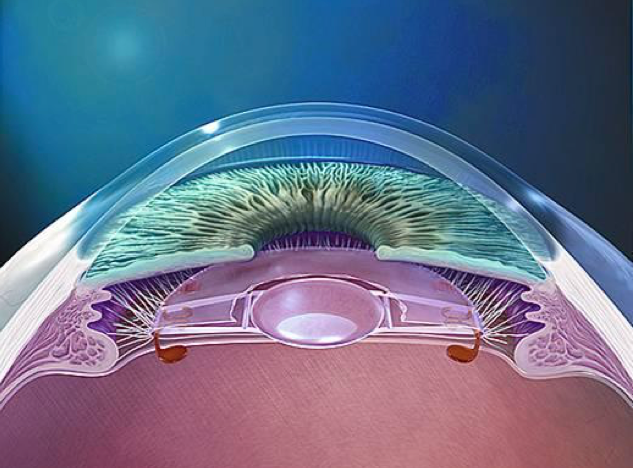

Intraocular lenses (IOLs)

This week’s blog on Intraocular lenses (IOLs) has been contributed by Dr Mohammed Sohaib Mustafa, Consultant Ophthalmic Surgeon, Specialist in Glaucoma and Cataract Surgery.

IOLs (also known as intraocular lenses) are implanted into a patient’s eye during surgery to remove cataracts. During the ‘refractive lens exchange’ procedure, the surgeon replaces the natural lens with these medical devices.
Before the 1980s and the introduction of intraocular lenses, if a patient had cataracts removed, they had to wear very thick eyeglasses or special contact lenses in order to see after surgery; there was no medical device available to implant in the eye to replace the focusing power of the natural lens.
Today, there is a wide variety of premium IOLs to choose from. The most suitable intraocular lens for a patient depends on many factors, including the patient’s lifestyle and any specific visual needs. There are ‘premium’ multifocal intraocular lenses available with advanced features beyond those found in basic single vision IOLs.
During your preoperative examination and consultation, Dr Sohaib Mustafa can help you choose the best IOL for your needs.
Toric IOLs

The choice of IOLs includes the option of a type of lens called Toric Multifocal IOLs. These premium lenses can also correct a range of vision issues including near/far-sightedness as well as astigmatism. This is made possible because they contain a range of power across the lens, and the surgeon can align the lens to the patient’s cornea and so correct the astigmatism very accurately, during surgery.
Multifocal IOLs

Multifocal IOLs are another category of presbyopia-correcting IOLs that can decrease your need for glasses for reading or computer use after cataract surgery.
Like multifocal contact lenses, these premium IOLs have added magnification in different parts of the lens to expand your range of vision so you can see objects clearly at all distances without glasses or contact lenses.Some studies have shown multifocal IOLs tend to provide better near vision than IOLs, but they also are more likely to cause glare or mildly blurred distance vision as a tradeoff.
Dr. Mustafa can help you decide whether you are a good candidate for multifocal IOLs during your preoperative examination and consultation.
Monovision

An alternative to multifocal IOLs for correcting presbyopia is monovision, which is not an IOL.
This is the technique of fully correcting the vision in one eye and intentionally making the other eye mildly nearsighted. In this situation, the fully corrected eye sees distant objects clearly (but glasses are needed to see objects nearby), and the mildly nearsighted eye sees close objects very well without glasses (but distant objects are not so clear). This allows the patient to adapt, and to use the dominant eye for distance and the non-dominant eye for near vision.However, this option does not suit everyone. If it is considered, the patient would need to have a contact lens trial to simulate this combination of vision correction (although this would not be a perfect trial if there is cataract) to allow the patient to decide whether it would be tolerable, before proceeding with surgery.


